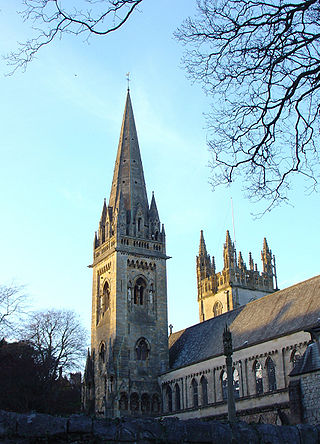
Llandaff is a district, community and coterminous electoral ward in the north of Cardiff, capital of Wales. It was incorporated into the city in 1922. It is the seat of the Bishop of Llandaff, whose diocese within the Church in Wales covers the most populous area of Wales.

Radyr is an outer suburb of Cardiff, about 4 miles (6.4 km) northwest of Cardiff city centre. Radyr is part of Radyr and Morganstown Community, for which the 2011 Census recorded a population of 6,417.
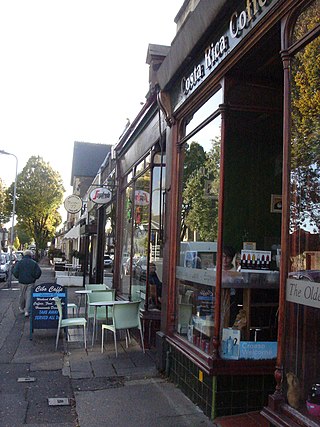
Pontcanna is a district and community in the city of Cardiff, Wales. It is located a short distance to the west of the city centre, and its borders are approximately indicated by Western Avenue, the River Taff, Cowbridge Road East, Llandaff Road and Cardiff Road.
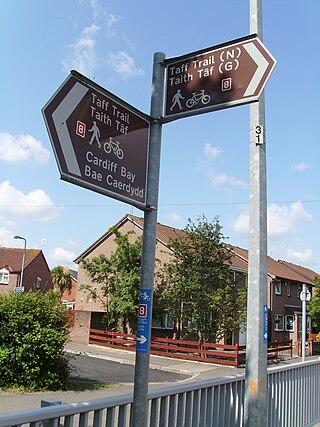
The Taff Trail is a popular walking and cycle path that runs for 55 miles (89 km) between Cardiff Bay and Brecon in Wales. It is so named because it follows the course of the River Taff. Along much of its length, it follows the National Cycle Network Route 8 that continues to Holyhead, and is substantially off-road.

Whitchurch is a suburb and community in the north of Cardiff, capital of Wales. It is approximately 3 miles north of the centre of the city on the A470 road and A4054 road. It falls within the Whitchurch & Tongwynlais ward. The population of the community in 2011 was 14,267.
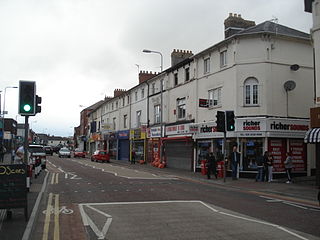
Canton is an inner-city district and community in the west of Cardiff, capital of Wales, lying 2 miles (3.2 km) west of the city's civic centre. Canton is one of the most ethnically diverse of Cardiff's suburbs, with a significant Pakistani and Indian population. The total population of Canton increased to 14,304 at the 2011 census. It is also the most Welsh-speaking district of central Cardiff, with 19.1% of the population speaking Welsh.

Grangetown is a district and community in the south of Cardiff, capital of Wales. It is one of the largest districts in the south of the city and is bordered by Riverside, Canton and Butetown. The River Taff winds its way through the area. Adjacent to the city's Cardiff Bay area, Grangetown is experiencing a period of gentrification and improvements in its infrastructure. Its population as of 2011 was 19,385 in 8,261 households. One of the "five towns of Cardiff", the others are Butetown, Crockherbtown, Newtown and Temperance Town.

Fairwater is a district and community in the west of Cardiff, capital of Wales. It is located a few miles from Culverhouse Cross which connects Cardiff to the M4 motorway. The population taken at the 2011 census was 12,981.

Howell's School is an independent day school for girls in Llandaff, a district in northern Cardiff, Wales. It consists of a nursery, infants, junior, senior school and a sixth form. The sixth form became coeducational in September 2005 and was renamed Howell's Co-ed College.

Bretton is a village in Flintshire, Wales. It is located to the west of the city of Chester, near the border with Cheshire, England. Along with the nearby village of Broughton, the population was 5,791 at the 2001 Census.
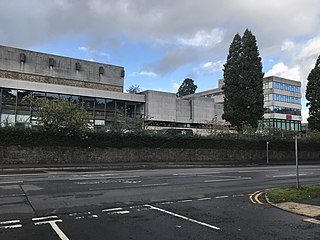
Broadcasting House was the headquarters of BBC Cymru Wales' radio, television and online services, situated in north Cardiff. The purpose-built facility opened in 1966 and consists of three blocks containing studios, offices and technical facilities. In 2020 the BBC moved out, transferring to BBC Cymru Wales New Broadcasting House in Central Square, Cardiff. The building was demolished in 2021 to 2022, with the site to be used for housing.

John Prichard was a Welsh architect in the neo-Gothic style. As diocesan architect of Llandaff, he was involved in the building or restoration of many churches in south Wales.

Llandaff Fields is a large parkland spanning parts of central and northern Cardiff, Wales.

Architecture in Cardiff, the capital city of Wales, dates from Norman times to the present day. Its urban fabric is largely Victorian and later, reflecting Cardiff's rise to prosperity as a major coal port in the 19th century. No single building style is associated with Cardiff, but the city centre retains several 19th and early 20th century shopping arcades.

Ysgol Gymraeg Pwll Coch is a large Welsh-medium primary school in the Leckwith area of western Cardiff, in Wales.
Canton is the name of an electoral ward in the west of the city of Cardiff, Wales, which covers part of its namesake community, Canton. The ward elects three county councillors to the County Council of the City and County of Cardiff.
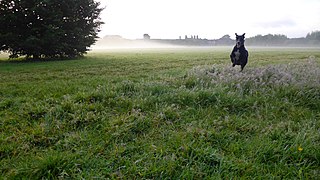
Sanatorium Park is a public park in the Leckwith district of western Cardiff, Wales. It includes open green space, wildflower hedgerows, two play areas, and a football goal with a half basketball court.

















